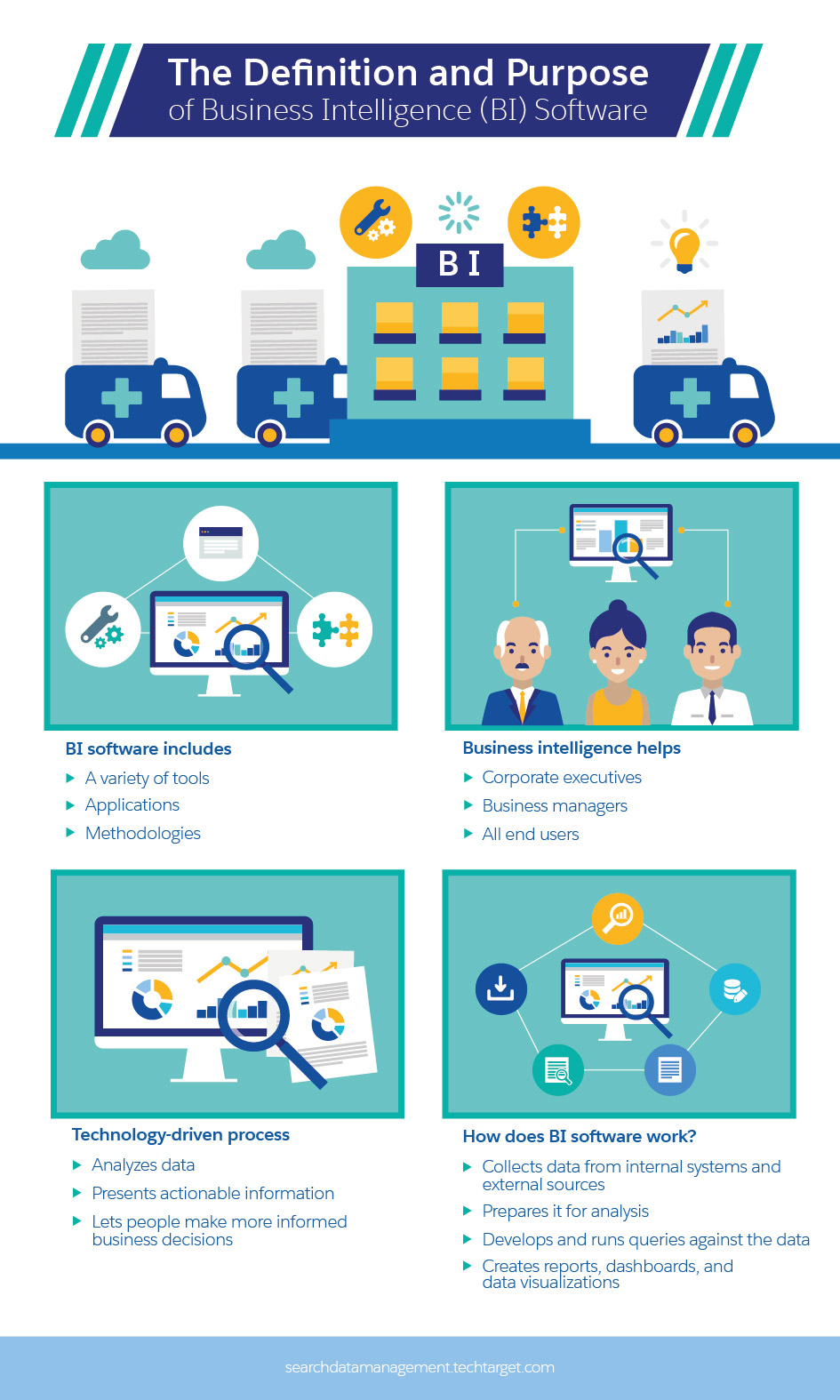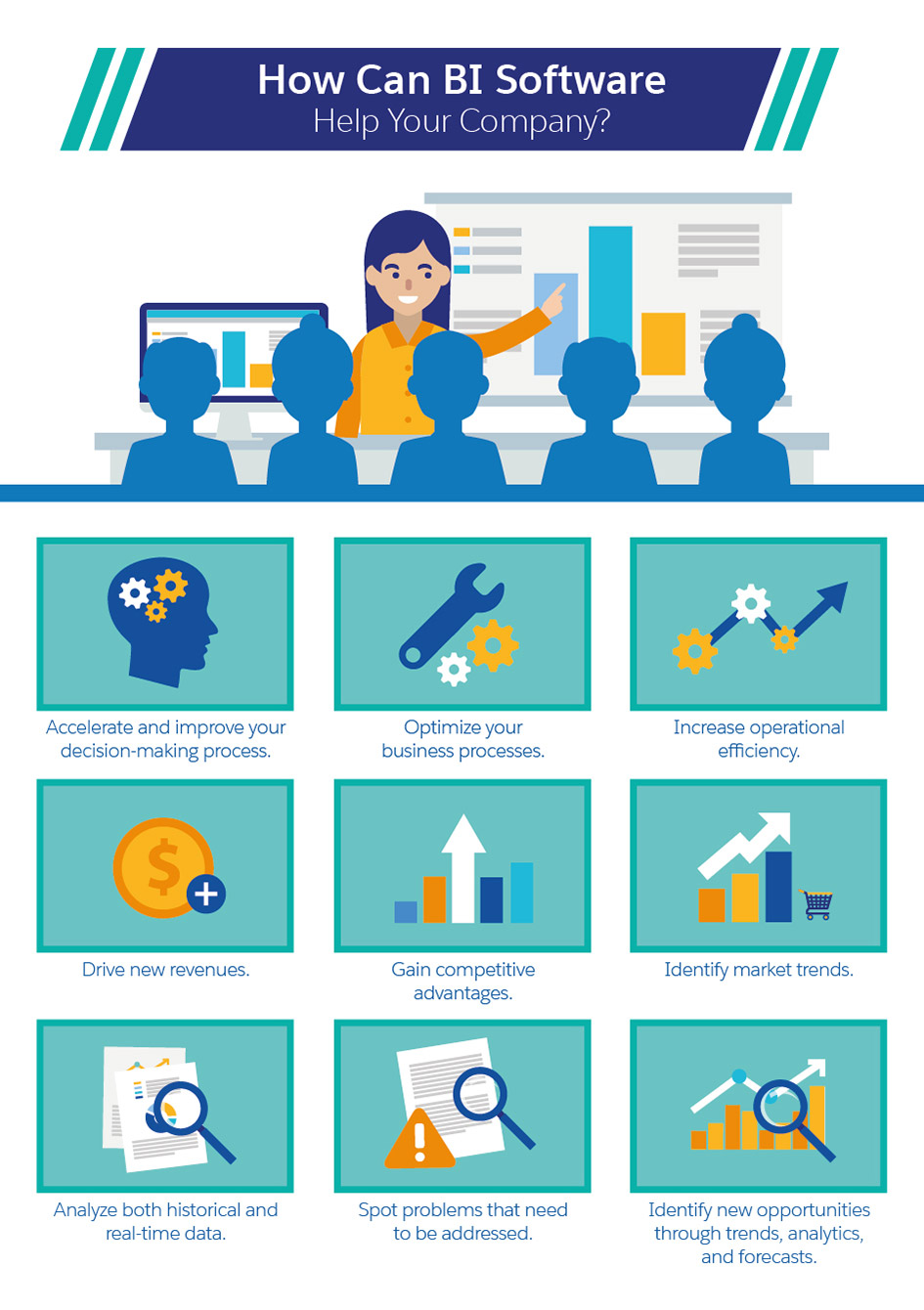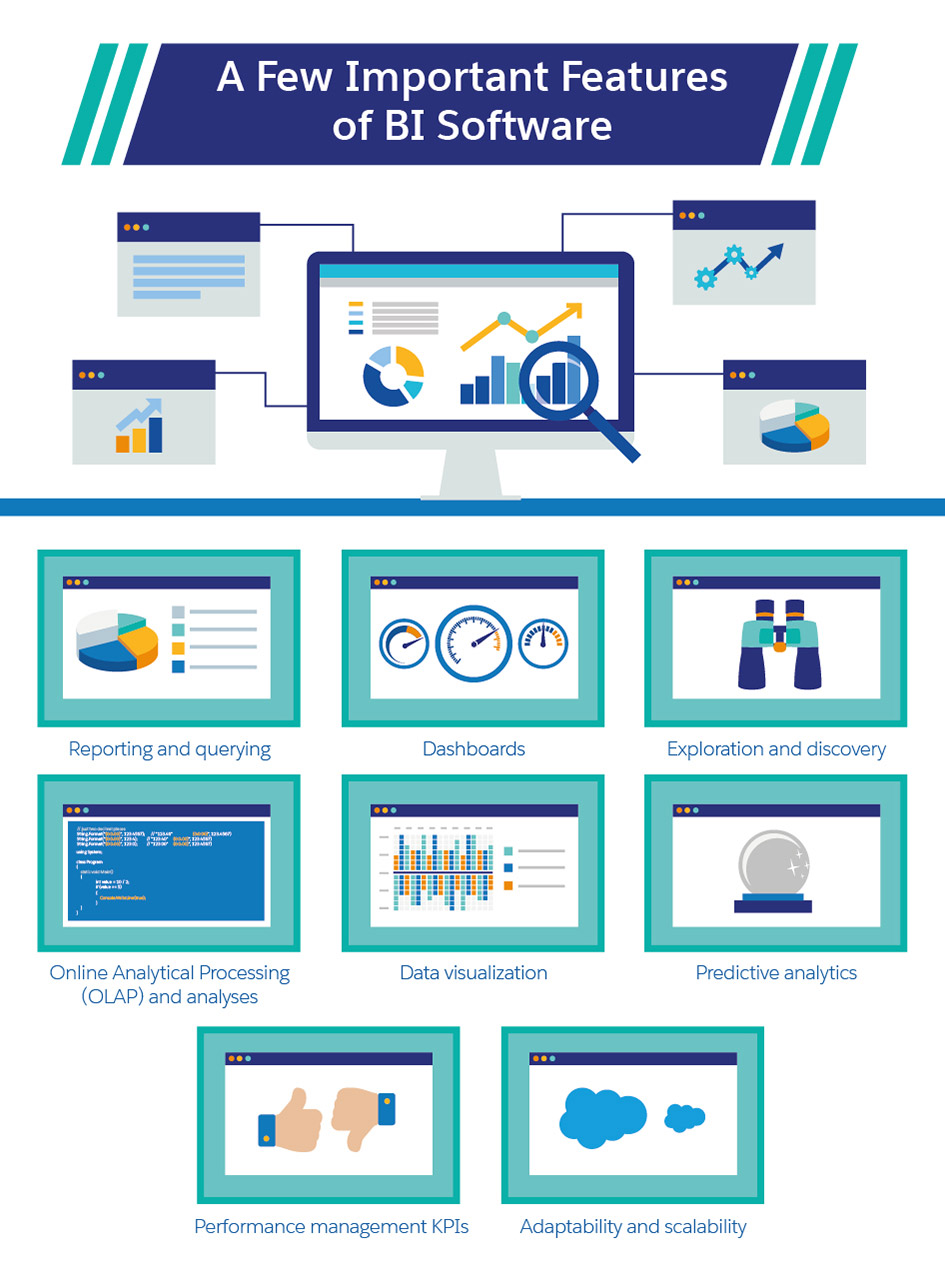business intelligence software
What's Your BIQ? All You Need to Know about Business Intelligence Software

To Start, what is Business Intelligence Software?
According to CIO, business intelligence refers to the classification of applications and technology tools “designed to collect, store and analyse raw business data, which can then be used to guide business decisions.”
Let’s break that down a little more with a comprehensive definition from TechTarget:
“Business intelligence is a technology-driven process for analysing data and presenting actionable information to help corporate executives, business managers, and other end users make more informed business decisions. BI encompasses a variety of tools, applications and methodologies that enable organisations to collect data from internal systems and external sources, prepare it for analysis, develop and run queries against the data, and create reports, dashboards, and data visualisations to make the analytical results available to corporate decision makers as well as operational workers.”
This is one of the top technology priorities for businesses this year. Many business owners are unsure of where it comes into play for their business specifically, and a way to prevent that is to improve your B.I.Q.

So why is BI gaining so much attention?
Data Insight. Using a BI tool that runs analyses allows you to take in a lot of data and get the most out of it. There is so much data available online through customer and user interactions that the challenge has always been being able to use it all to your advantage.
Market Consolidation. While there was a time where BI companies were largely independent and small-scale, in recent years they have become acquired by large vendors. In other words, there are fewer choices and they have become large in scale. While a lot of people are wondering what the consequences will be, the upside is that it does make it a lot easier to gain access to BI.
Structured and Unstructured Data. BI is constantly improving, and businesses are seeing many direct benefits. One of the main points of progression is the ability to use BI for both structured and unstructured data. Unstructured data—such as e-mail, memos, and voicemail messages—are rich sources of information that sometimes get put on the backburner to make room for structured data. Being able to see and cohesively analyse both types of data is a huge advantage.
The Advantages of BI

With BI software, you can:
- Accelerate and improve the decision-making process in your business strategies
- Optimise your internal business processes
- Increase operational efficiency and drive new revenues that you wouldn't otherwise
- Gain competitive advantages over your business rivals
- Better identify market trends
- Include both historical information and new data from source systems as it is generated
- Support both strategic and tactical decision-making processes
- Use tools and user-friendly apps for business executives and workers
- Spot and address business problems
- Identify new opportunities through trends, analytics, and forecasts
How to Select the Right BI Software for Your Company
If you’re going to invest the time in increasing your B.I.Q. and implementing BI software, there are a few steps to take.
First, make sure you know what business problem you’re trying to solve. CIO quotes Charles Caldwell, an executive at a business intelligence company, who says, “Too many folks look for the one silver bullet tool that will solve all analytics problems they ever have without fully defining the immediate problem to solve. And that is why so many BI projects fail.” Start with definable goals.
Next, involve the right parties. Whichever departments and people will be affected by the BI software analysis should know how to use it and how to read the data. Their support is important for the success of your software.

As you investigate different BI software options, pay attention to features. Integration is of utmost importance. Keep an eye out for these features:
- Reporting and querying
- Dashboards
- Exploration and discovery
- Online Analytical Processing (OLAP) and analyses
- Data visualisation
- Predictive analytics
- Performance management KPIs
- Adaptability and scalability
To clarify, OLAP is “powerful technology for data discovery, including capabilities for limitless report viewing, complex analytical calculations, and predictive “what if” scenario (budget, forecast) planning.”
Look over all of the features and decide which ones are must-haves, nice-to-haves, and those that you won’t use at all.
The Takeaway



